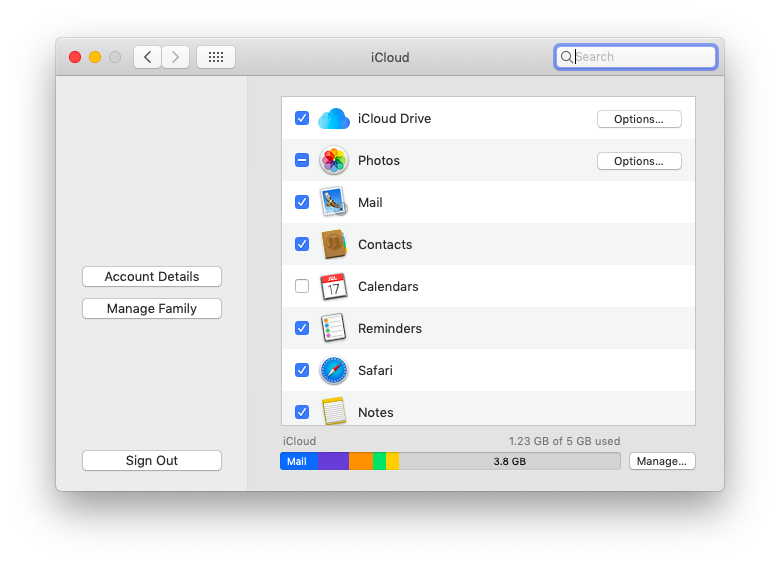© Provided by Business Insider NurPhoto/Getty Images
- Your Mac should automatically access your iCloud email when you open the Mail app if you've previously logged in.
- You can also check your iCloud email by using the iCloud website.
- If you're having issues with your iCloud email, there are easy ways to troubleshoot on your Mac or the iCloud website.
- Visit Business Insider's Tech Reference library for more stories.
Having an iCloud email connects all your files with your inbox, allowing you to send them quickly and easily wherever you are from your Mac, iPhone, or iPad.
Your Mac's Mail app should automatically download from iCloud when you register your computer, and the same goes for your iPhone or iPad. For the iCloud mail account to work on your Mac, you need to have OS X 10.7.5 (Lion) or newer, so a first step might be to update your Mac OS if it's outdated.
When you log in to your Apple device, it should either ask you to sign in to your iCloud account. Otherwise, you'll already be signed in. That means if your iCloud email is already set up, new messages will automatically download, with the red notification bubble above the Mail app icon in your Dock or app screen.
Icloud 10.7.5 Download
If you don't want to use the app, you can also access your iCloud email inbox online through the email client's website. To access your email this way, you will need to ensure you have a supported browser. You also may need to clear your browser's cache if you're still having issues.
Here's how to check your iCloud email on your computer and the iCloud website.
How to check iCloud email on a Mac
1. Open your Finder.
2. Click 'Applications.'
3. Select 'System Preferences.'

Turn iCloud features on or off on a Mac. On your Mac, choose Apple menu System Preferences, then do one of the following: macOS 10.15 or later: Click Apple ID, click iCloud, then select or deselect each feature. MacOS 10.14 or earlier: Click iCloud, then select or deselect each feature. ICloud is built into every Apple device. That means all your stuff — photos, files, notes and more — is safe, up to date and available wherever you are. And it works automatically, so all you have to do is keep doing what you love. Everyone gets 5GB of free iCloud storage to start and it’s easy to add more at any time. Gary Loftis wrote: I use a PowerBook G4 with OSX 10.5 and MobileMe. What does iCloud change for me? You need Lion to use iCloud fully. The one thing you can do with Leopard is to access your iCloud email.
© Ryan Ariano/Business Insider You may need to scroll to find this option, which is represented by gears. Ryan Ariano/Business Insider4. If prompted, sign-in using your Apple ID username and password.
5. Otherwise, double-click the 'Apple ID' icon.
© Abbey White/Business Insider You can find this option in the top right corner of the System Preferences window. Abbey White/Business Insider6. Click the blue box next to the 'Mail' option if it hasn't been selected.
© Abbey White/Business Insider This menu lets you control which apps connect to your Apple ID and load on your Mac. Abbey White/Business Insider7. Close out of the 'System Preferences' window and click the Mail app icon in your Dock.
How to check iCloud email on the iCloud website
1. Go to iCloud.com.
2. Sign in using your username and password.
© Ryan Ariano/Business Insider If your Mac is newer, you can also use touch authentication to log in. Ryan Ariano/Business Insider3. If you haven't signed in to iCloud.com before, follow the verification prompts to give the iCloud website access to your account data.
4. Select the Mail symbol.
 © Ryan Ariano/Business Insider This is located in the top right corner of the app's list. Ryan Ariano/Business Insider
© Ryan Ariano/Business Insider This is located in the top right corner of the app's list. Ryan Ariano/Business Insider5. If Mail isn't turned on in your iOS settings, you'll need to do this before you can access your messages.
How to troubleshoot your iCloud email on a Mac
1. If you receive a notification that an error occurred while attempting to deliver a message, click on Mail in the top toolbar with the Mail app open.
2. Select 'Preferences.'
© Ryan Ariano/Business Insider This is the second option from the top. Ryan Ariano/Business Insider3. Click on 'Accounts.'
4. Select your iCloud email account.
5. Click on the Server Settings tab.
6. Check that the Outgoing Mail Account is set to your iCloud account.
© Ryan Ariano/Business Insider You can choose which client you want to send emails as in the dropdown. Ryan Ariano/Business Insider7. You can also click on 'Account Information' to ensure 'Enable this account' is checked.



8. If sending large attachments, check next to 'Send large attachments with Mail Drop' to ensure sending a big file doesn't keep your email from sending.
© Ryan Ariano/Business Insider This will prevent the Mail app from blocking outgoing messages with large file size attachments. Ryan Ariano/Business Insider